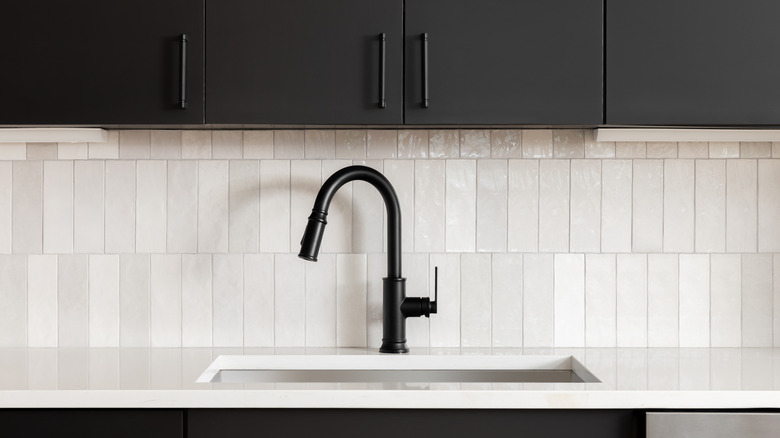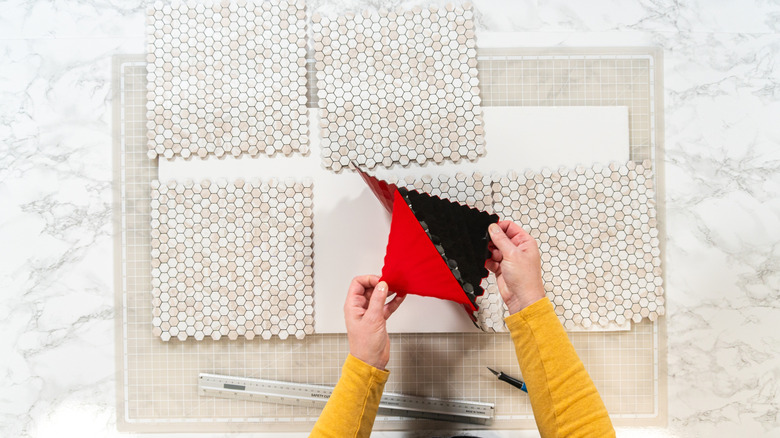How Long Does Peel-And-Stick Tile Backsplash Really Last?
We may receive a commission on purchases made from links.
Using peel-and-stick tiles to create an eye-catching backsplash is a budget-friendly DIY kitchen upgrade for homeowners and renters alike. Peel-and-stick tiles are available in a variety of materials, all of which include an adhesive backing that make it easy to stick them on the wall without additional spray glue or messy mortar and grout. However, the easy installation of these sticker-like tiles might have you wondering whether they'll last longer than a few months.
While traditional tile is typically made of ceramic or porcelain, which can last for a lifetime, peel-and-stick tile is usually made of vinyl, glass, or metal. Vinyl is a desirable choice for kitchen backsplashes due to being wallet-friendly and water-resistant. However, this type of tile is more likely to peel over time and may not last as long or be as durable as glass or metal. In addition to the quality and type of material, high moisture, humidity, and heat are other factors that effect how long your peel-and-stick tiles last; if you're planning to install the tiles over the stove, make sure to buy ones that are heat-resistant, such as Smart Tiles peel-and-stick backsplash or StickGoo white subway peel-and-stick backsplash. While they don't last as long as traditional tile installed with mortar, they can potentially last up to five years if installed correctly and properly maintained.
Tips to ensure your tiles last
To ensure your tile looks flawless and lasts for years, prep the walls by wiping them down with soap and water and allowing them to dry completely. Sand down any uneven areas and fill in any holes to ensure a flat surface for the tiles to adhere to. When sticking them on the wall, use a credit card, rolling pin, or similar tool to smooth out the air bubbles.
Another key to ensuring your peel-and-stick tile endures is limiting moisture; do your best to keep it as dry as possible. If water splashes on it, wipe it down immediately. Also, avoid using abrasive chemicals when cleaning the tile. Instead, lightly spray a mixture of vinegar and water on the tiles and use a soft microfiber cloth to wipe away any stains.
If you're renting and it's time to move out — or you simply want to change your design – many peel-and-stick tiles can be easily removed by using a hair dryer to heat the tiles and slowly peeling them off. Use an adhesive remover for any residue left on the walls if they don't all come off cleanly. For more simple hacks for upgrading your kitchen on a budget, check out a guide to the best ways to update your kitchen cabinets without paint, and bring some order to your space with highly reviewed IKEA storage pieces for a more organized kitchen.

